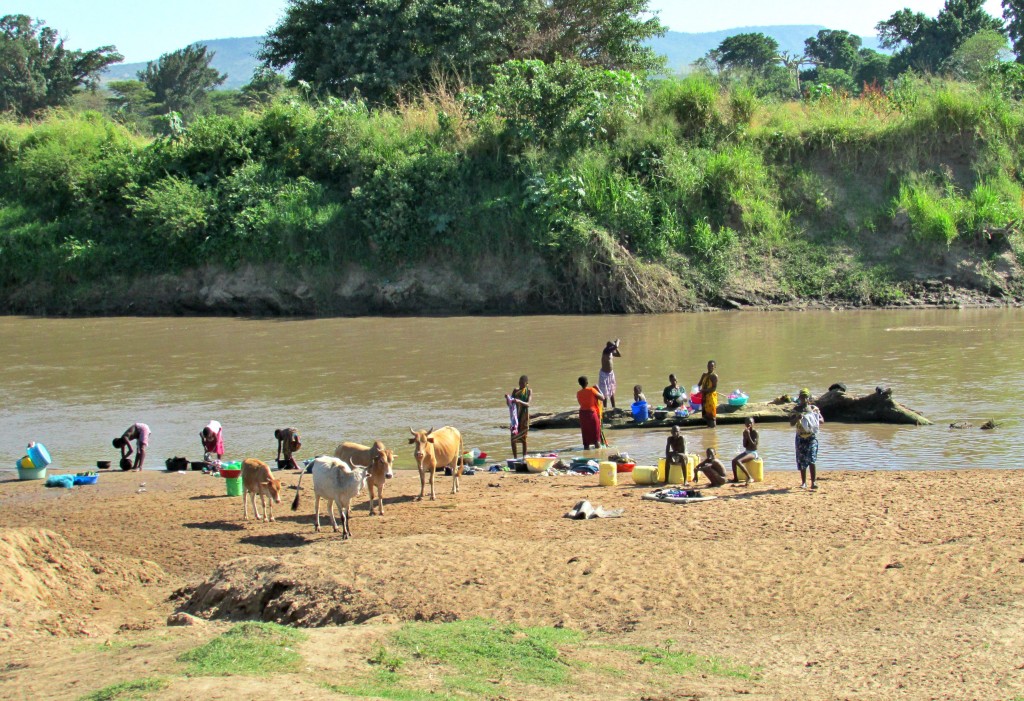The Mara River holds essential important because it is a water resource for local human and ecological communities. As a water resource, the Mara provides year round, albeit inconsistent, flow. The river reflects seasonal flow and level fluctuations due to whether it is the rainy or dry season. People directly use the river locally for livelihoods such as keeping cattle, farming, safari camps, gold mining processing, and fishing as well as for domestic needs that include cooking, bathing, drinking, and washing. Corporations also use the river for mining and farming and this need is increasing as economically-driven development plans are realized throughout the basin. Safari companies rely on the river resources for servicing their clients during tourist season both for domestic needs and as a base for seeing park animals. The great migration of wildebeest crosses the Mara at several locations and ecologists speculate the the animals use the river to navigate the 2000 + kilometer movement. For other species, the water provides a breeding ground, refuge, integral part of their habitat, and drinking water. For Lake Victoria aquatic species, the Mara wetlands, a feature in the Lower Mara River Basin, is a nursery of sorts for fish, amphibians, and birds of all sorts, many of which have not been extensively documented yet.

Local access point on the Mara for cattle, bathing, washing, fetching, and fishing. Ana Lemos © 2016.
Identifying other importance of the Mara has been a task that the SELVA team set out to accomplish during their 2016 fieldwork. The team expanded a detailed understanding about the river’s importance by speaking with locals about specific livelihood ties to the river and domestic uses. We also visited the river each day in different stretches to witness the uses firsthand. We ended up with a collection of information that included unique importance based on geography or common importance based on the region.
For humans the river holds more importance than just economic, and for ecological systems, the importance is myriad throughout species’ life cycle. The river signifies the passage of time for when farmers plant and fishermen harvest. The river serves as a central point for social-gathering. In some places one access point is used for bathing, fishing, fetching water, and washing and many people come together and chat over their daily tasks. The river is an ideal place for hunting and spotting African animals on or off the park land. It is also where locals harvest other river-related resources as discussed in an earlier post. Some people use the river for transportation. It is a demarcating device to divide villages and jurisdictions for governance. During a drive across the basin near to the wetlands SELVA experienced the consequences of an overnight rain event that caused ephemeral streams to form and a loud chorus of frog song indicated the awakening of thousands of frogs. Many species need the river and the climate it provides for birthing, breeding, eating, and surviving. And the Mara is one of many important tributaries feeding Lake Victoria with water, nutrients, and species.
The future of the Mara will depend on how these river importances are held in future communities. There is no telling what local or global climate changes will do to the water flow, nor what impending development plans to divert and dam the river will do to the availability or quality of water. Identifying key importances of the river that stretch beyond obvious economic uses is important in current decision-making for future transboundary river management.








Recent Comments